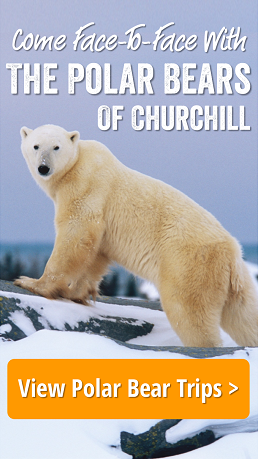by Steve Selden | Jan 6, 2015 | Churchill News
Birds love Churchill in the summer months when the Arctic food chain grows exponentially to take advantage of the short warm season. The tidal pools and coastlines are teeming with plankton, krill, capelin and many other food sources unmatched by any other region in the world. The pure number of birds migrating to Churchill in the spring certainly is a testimony to the bounty of the Arctic.

Hudsonian Godwit in flight. A. J. Hand photo.
Nearly 250 bird species appear in Churchill over the course of the year. Most of those are “summer” migratory species while some reside in the region year-round. Personally, I feel the ones that come and go tend to be more intriguing.
Today’s focus is on the Hudsonian Godwit, a large shorebird with a long, upturned bill. This bird breeds in the Arctic and winters in southern South America. Because of its remote breeding and wintering grounds the godwit is one of the more obscure American shorebirds.

Fall migration routes for Hudsonian godwits Kendall and Sig. Significant staging areas were documented along Hudson/James Bay and within Colombia, Venezuela, Brazil, and Bolivia. Map by CCB.
Nesting on the mixed tundra and wetlands of northern Canada and Alaska, the godwit travels across the great plains of the United States in the spring then returns south along the Atlantic coast to South America in the winter. Reported nonstop flights of several thousand miles between these sites are not uncommon. At times, in the fall, “touch-downs” on the Atlantic coast are necessitated by northeasterly winds.
The long upward bill of the godwit digs in muddy, rocky or sandy shorelines as well as marshes, mudflats and flooded tundra or fields. The length of the bill allows it to search deep in the earth to acquire insects or organisms unreachable by other foragers. The Hudsonian, however, is the smallest of the four godwit species. In my guiding days I would associate the upturned bill with “god”, (heaven generally thought of as above in the sky) in order to help identify the bird from a distance or while mixed in with other shorebirds. Whimbrels have similar long bills, though slightly curving downwards, and dowitchers have more straight, dagger-like bills. All three are found on the shores of Churchill in the spring and summertime. Due to their similar feather markings and size, the bills are quick and easy identifying symbols.

Hudsonian Godwit in breeding plumage. Seth Kellog photo.
The Allen Bird Club website can be found at massbird.org/allen
Seth Kellogg can be reached at skhawk@comcast.net
Once thought of as one of North America’s rarest birds it now is know to be more prolific. Vulnerability for the species remains quite high as the population is confined to only a few locales geographically.
When found in groups, godwits are generally collectively known as an “omniscience”, “pantheon” or “prayer”. A “prayer of godwits” fits quite nicely with my bill reference for identification. These birds truly are incredible in all facets of their lives.
If you have the urge to track the summer life cycle of the Hudsonian Godwit, come to Churchill with Natural Habitat Adventures! Visit nathab.com for details.
by Steve Selden | Jan 4, 2015 | Churchill News
The Hudson Bay Quest will begin this year in Gillam, Manitoba on March 13th, 2015. The mushers will sled 271 kilometers north to Churchill, Manitoba.

Hudson Bay Quest.
Looking over the 2015 musher roster one finds mushers from Churchill. Maybe this will be the year a local musher brings home the crown. Here’s a look at the Churchillian contingent of mushers registered at the moment:
Charlie Lundie

Dave Daley

Earnest Azure

Dan Dimuzio

Justin Allen

by Steve Selden | Jan 3, 2015 | Churchill News
Churchill is under a cold siege! The next 14 hours or more are supposed to be very cold in the region. How cold? An extreme wind chill factor resulting in minus thirty and below centigrade is expected. Extreme cold warnings go into affect when the temperatures fall between minus 30 C and minus 50 C for two hours or more.

Spruce trees in the blowing snow of a blizzard. Brad Josephs photo.
Churchill is expected to push the minus 50 C level resulting from minus 30 C and below real temperatures coupled with 15-20 km/hour winds overnight into Sunday.
Extra caution is being advised to those people needing to go outside or those who work in the cold.
With the intense cold, the sea ice in the Hudson Bay builds to very thick which will bode well for an extended polar bear seal -hunting season.

by Steve Selden | Jan 2, 2015 | Churchill News
Churchill is known worldwide at the best, most accessible place to see polar bears. Now, if you’ve spent much time in this northern Manitoba outpost town you know there’s much more than the “king” of the Arctic. In fact, often it’s the other animals of this remote land on the shores of the Hudson Bay that give travelers thrills. The unexpected often can be as exciting as seeing the main event.
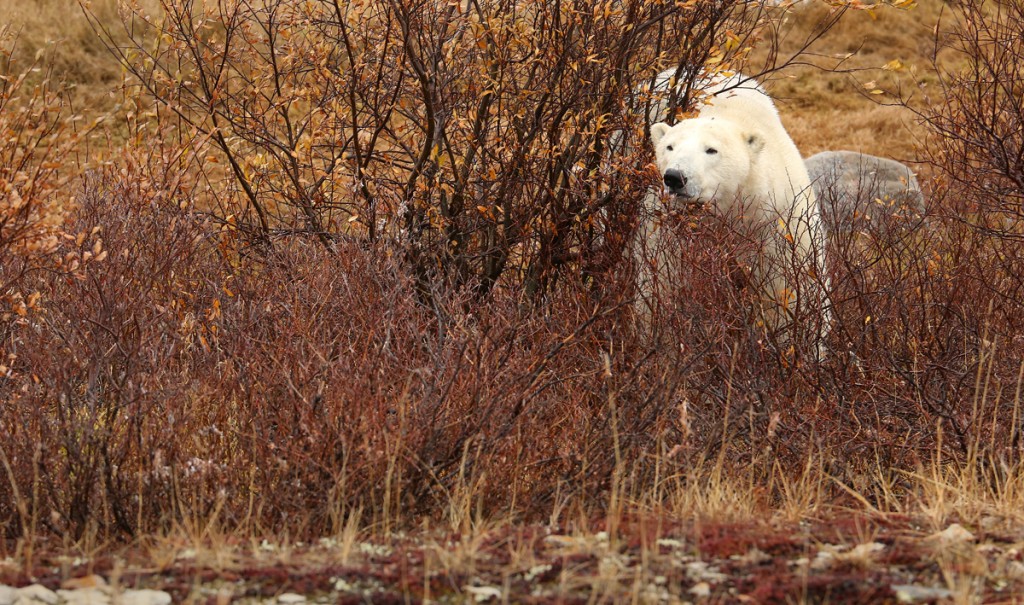
Polar bear in the willows in Churchill. Eric rock photo.
Here are five other animal attractions around Churchill you could see during polar bear season and possibly other times of the year.
1. Arctic Fox– This icon of the Arctic is one of the most beautiful animals in the north. To some extent the white fox symbolizes the Arctic as much as the mighty polar bear. the population tends to run in cycles and fluctuates with the lemming population and will compete from year to year with the red fox.
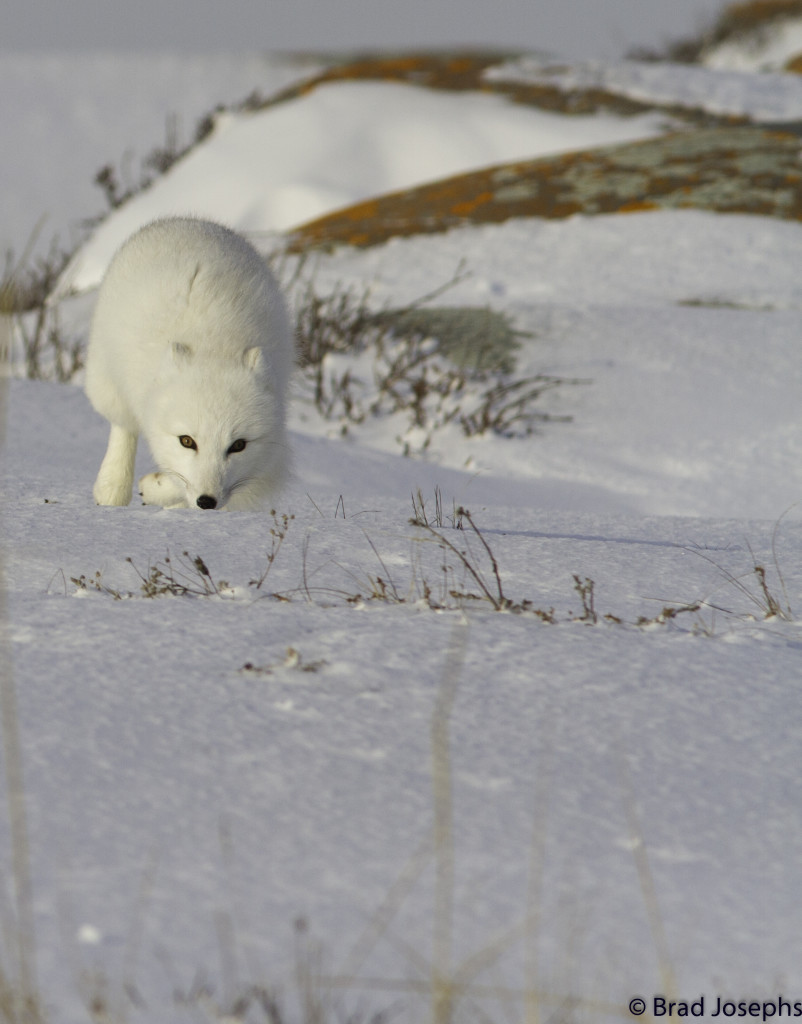
Arctic fox sniffing the tundra for prey. Brad Josephs photo.
2. Moose– Usually individual moose can be seen from a polar rover or from a helicopter journey over the vast tundra.
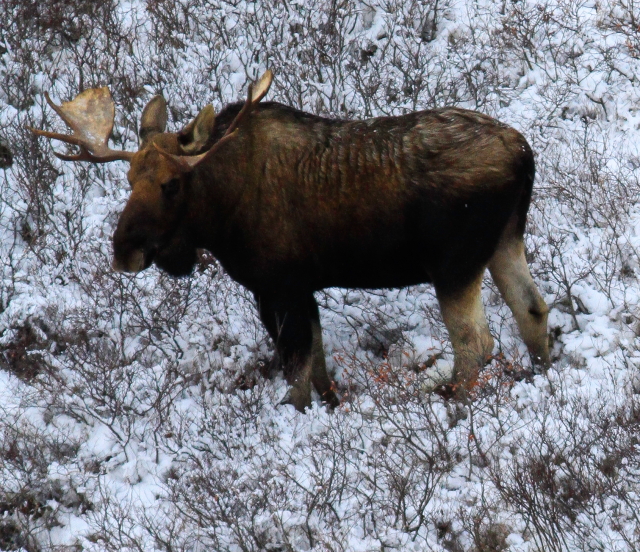
A moose on the tundra. Brad Josephs photo.
3.- Red fox– The “other’ fox in the Arctic has been increasing its range of habitat over the years and even foraging seal-kills out on the Hudson Bay ice pack. The red fox numbers fluctuate from year to year…highly dependent on lemming numbers.
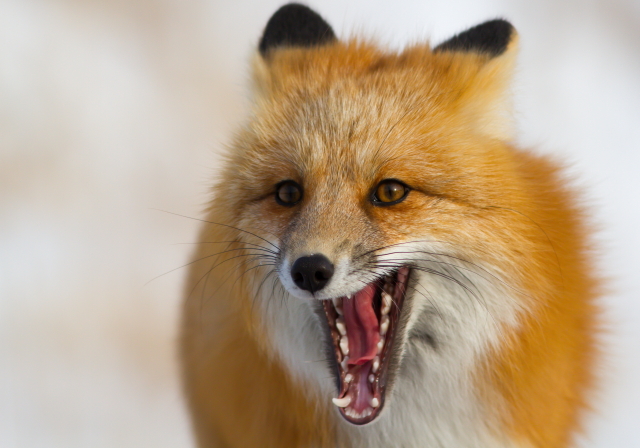
Red fox along the coast in Churchill,MB. Brad Josephs photo.
4. Beluga Whale– Although you will not see this whale during polar bear season, you could see polar bears during whale season which can extend until late August and even early September.
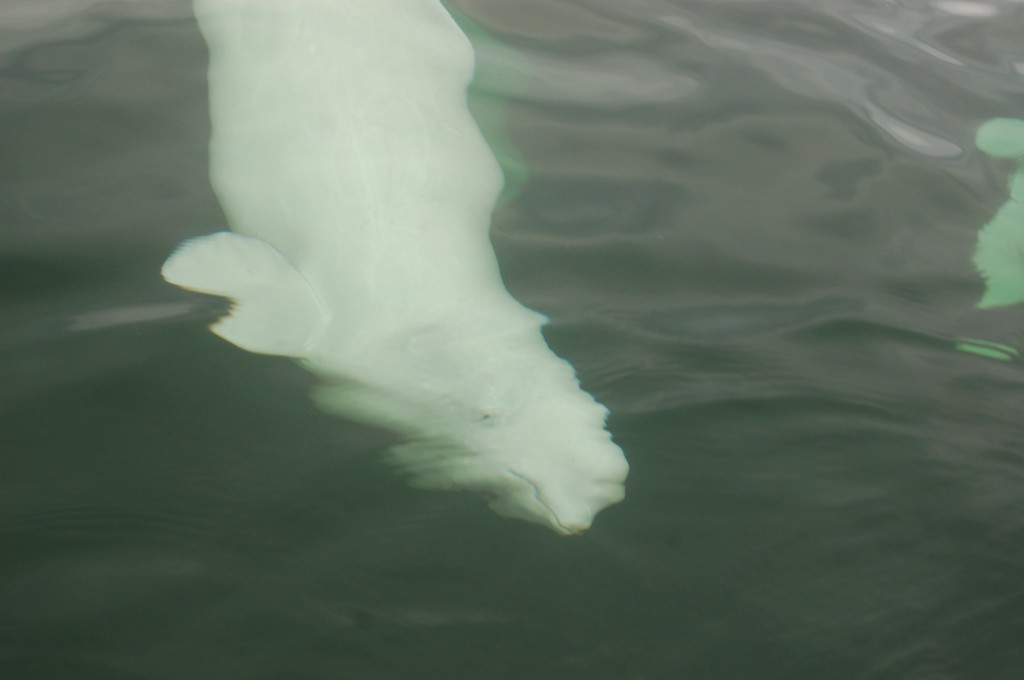
Beluga whale in the mouth of the Churchill River. Photo-Steve Selden
5. Killer Whale (Orca)- A very rare sight in the Hudson Bay. Occasionally these leviathans surface in areas where they can be seen, usually just outside the mouth of the Churchill River. If you are lucky enough to see one the chances of getting a photo are slim.
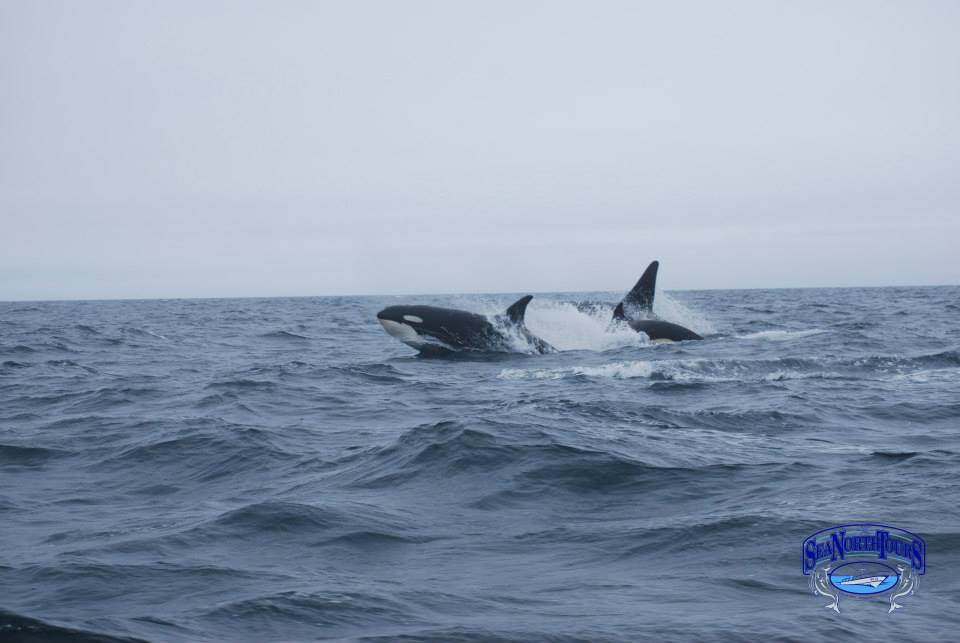
Orca’s in the Hudson Bay. Dwight Allen photo.
Come to the north and Churchill to see these amazing animals with Natural Habitat Adventures! Visit nathab.com for information.
by Steve Selden | Dec 28, 2014 | Churchill News
March 13th marks the start of this year’s Hudson Bay Quest dogsled race. This year the race begins in Gillam, MB and finishes in Churchill, MB. The start date is slightly earlier this year as it has been closer to St. Patrick’s Day (March 17) the past few years. should be a festive winter atmosphere as the mushers guide their sleds toward Churchill.
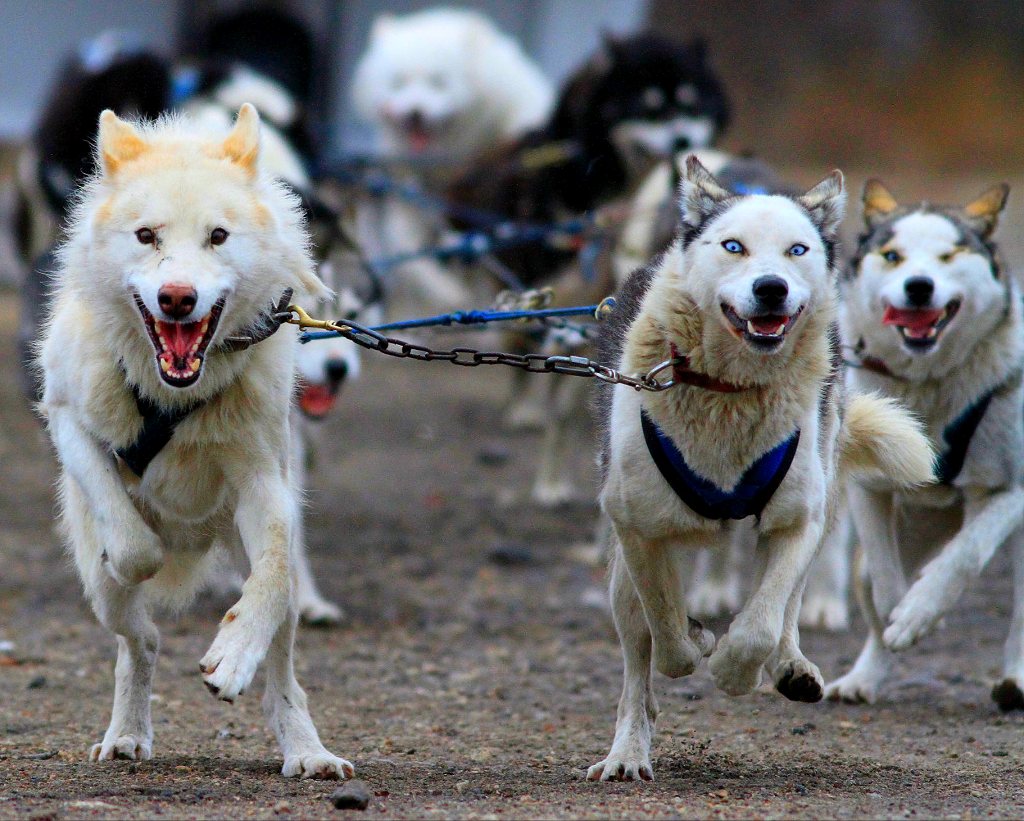
Sled dogs in training for the Hudson Bay Quest. Brad Josephs photo.
Take a look at the 2015 updated musher roster and race map courtesy of Hudson Bay Quest website.
The OFFICIAL 2015 HBQ race roster is as follows:
1.) Martin Massicotte
2.) Dan DiMuzio
3.) Dave Daley
4.) Justin Allen
5.) Tom Terry
6.) Peter McClelland
7.) Jesse Terry
8.) Jennifer Freking
9.) Charlie Lundie
10.) Blake Freking
11.) Normand Casavant
12.) Denis Tremblay
13.) Ryan Anderson
14.) Shawn McCarty
15.) Leonard McPherson
16.) Al Hardman
This is the official list as our Race Marshal has reviewed the racer’s qualifications. This list reflects the order of registration, and will be used for the bib draw. Welcome to the 2015 HBQ!

by Steve Selden | Dec 27, 2014 | Churchill News
As a guide and logistics coordinator, I worked in Churchill close to 15 years. Some of that work experience with Natural Habitat Adventures was on the job training. Some of that training was life or death related and could not be prepared for anywhere else.
Whenever risks are involved in an endeavor, being prepared as much as possible helps one make a right decision whenever a situation becomes dire. In Churchill one thing anyone, either a resident or visitor, needs to learn quickly is how to deal with a polar bear encounter. Or, better yet, prevent possible polar bear encounters.
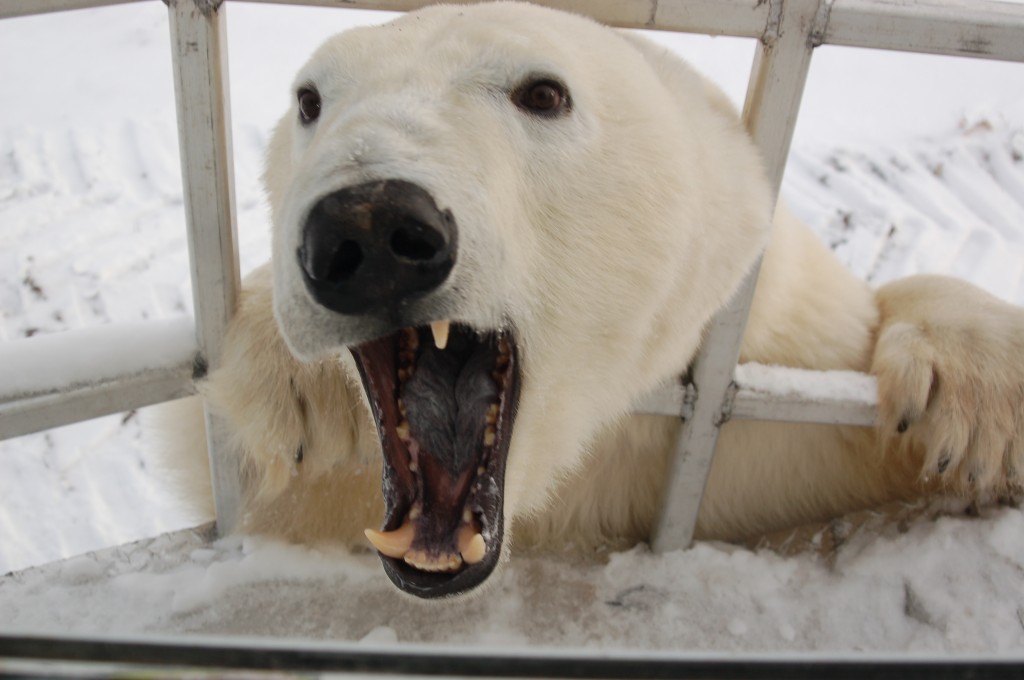
Polar bear trying to get in the vehicle in Churchill. Steve Selden photo.
However, even if you are well aware of the risks, sometimes polar bears can sneak up on you when you lose track of their movements.
Here are three times in Churchill when I felt a bit unnerved by being in the vicinity of a polar bear:
1. I described this incident in an earlier post. I was in a photographer’s van at a popular polar bear photo location in Churchill and a polar bear tried to get at us through an open driver side window. The photographer reached from the backseat where we were all backed into, unsure if the polar bear would climb through the window or not, and turned the key in the ignition to scare the bear away from the vehicle. It worked and to my amazement he kept his arm attached to the rest of his body.

Cautious polar bear on the rocks. Photo Rhonda Reid.
2. On a delivery of food and beverages out to the polar rover launch site, Darcy Callaghan and myself were pressed for time. We arrived at the loading ramp and began unloading the van full of supplies and handing them over the railing to the rover driver. We were about halfway finished when something made me look just to the right of the van and I looked straight into the eyes of a large male polar bear about 12 feet away trying to unload some of the food for himself. Some shouting from fear and the bear was on his way. Close call.
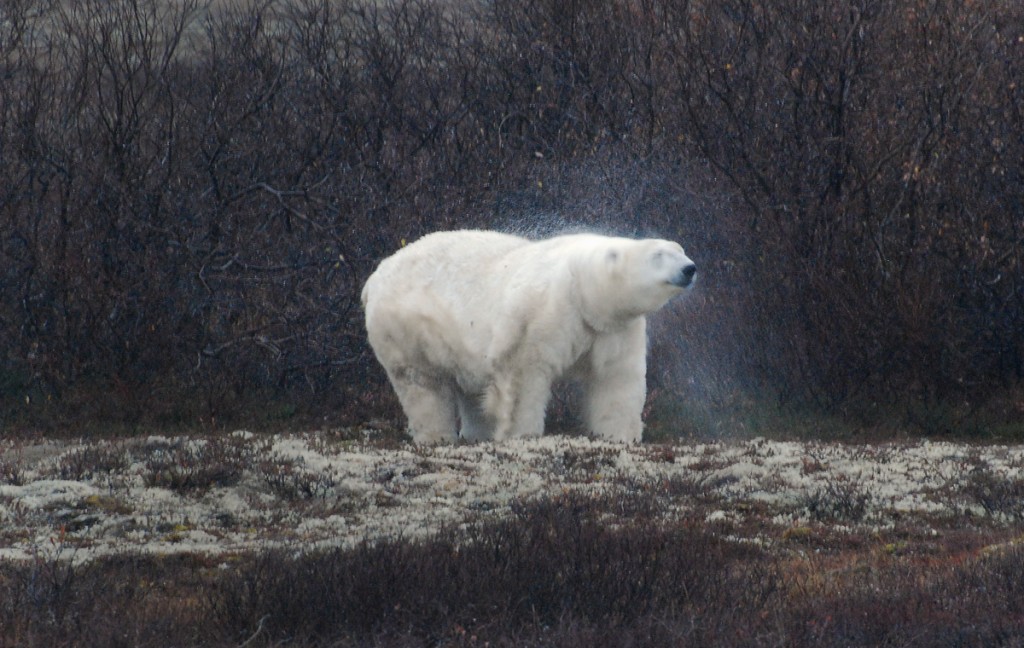
Churchill Polar bear shaking off the rain in the fog.
3. The third scare was clearly my most tenuous “near” polar bear interaction. I was leading a Churchill summer group and we were on a half – day rover trip to the coast for a barbecue and walk around the coastline. I had a strange feeling before we even left the Great White Bear launch. The fog was rolling in and the hair on the back of my neck was standing up. When we got out to Halfway Point, we took off for a walk with the group of 12 heading down the trail to the beach. The rover driver, John Sinclair, was walking next to me and I was carrying a shotgun. As we moved along, the group spread out on the wide trail. We were talking and John suddenly said, ” I’m going back to the rover”. At least that’s what I thought he said. He actually said, ” I think we should all go back to the rover.” As he calmly pointed into the fog ahead, we looked to see a huge polar bear sauntering right towards us at about 300 feet away. We turned and slowly though methodically, walked swiftly to the rover and out of harms way. It could have been bad had we not seen the bear in time.
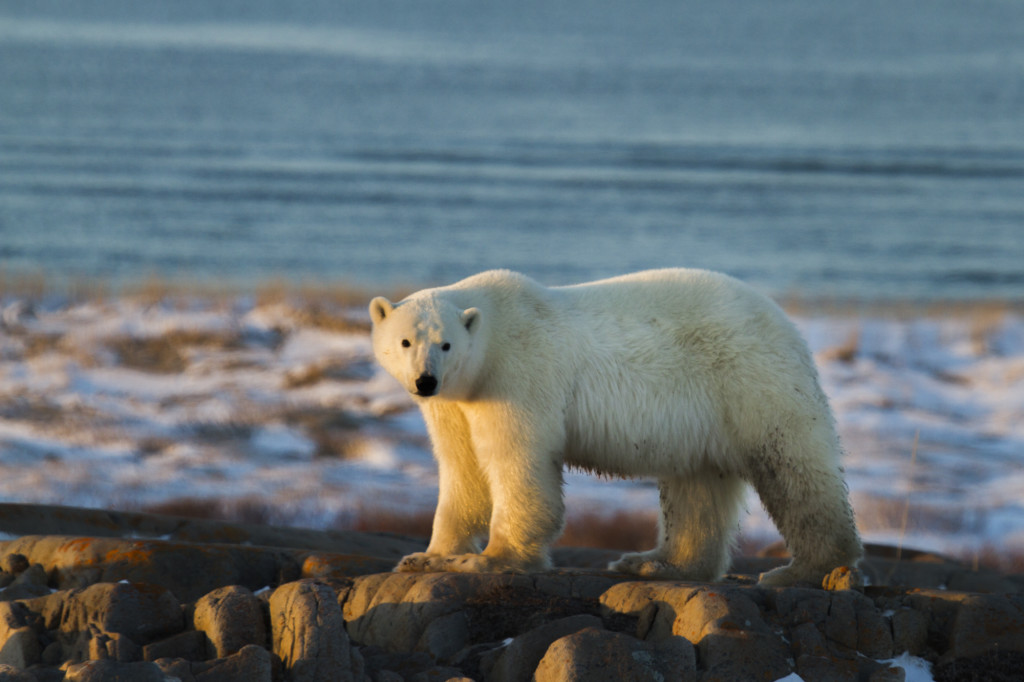
Polar bear on the Hudson Bay coast. Sean Beckett photo.
Sometimes a little bit of luck can save your life in Churchill. I’ve had my share for sure.
























